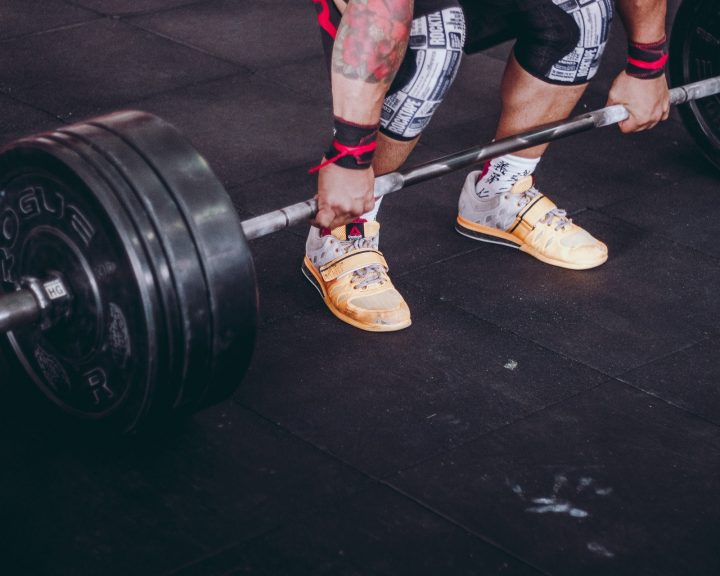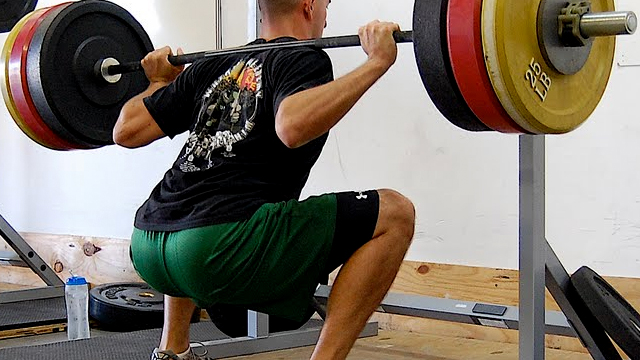Over the past few weeks, I’ve done some tweets and Facebook posts about the overload principle and how the exercises that we use fit into it. To review, the overload principles states that in order to continue making gains from working out one has to find a way to make the workout more difficult. Simply doing the same thing every time leads to stagnation and eventual regression from training. Now, this is normally achieved in several ways:
• Increasing the intensity: the weight lifted, the speed run, the height jumped, etc.
• Increasing the volume: i.e. increasing the amount of work done.
• Modifying the rest/recovery: Resting less in between each set makes the workout more difficult. Resting more in between each set allows for you to train at a greater intensity because you have more recovery time.
• Modifying the frequency of training: training more frequently means you cannot train as intensely each session, but the increased work forces you to adapt. Training less frequently allows you to train more intensely in each session.
Clearly there are pro’s and con’s to each approach. Here’s the long-term problem for athletes; there comes a point in every athlete’s training career where each of these becomes impractical to change. For example, if you are in a strength/power sport then it doesn’t make sense to do sets of extremely high volume in anything. The rest and recovery can be modified, but you still have to keep it specific and relevant to the event you are training for. Training frequency is dependent upon training time available and the ability for the athlete to recovery.
In addition to the above, there is probably a point of diminishing returns with increasing the intensity. In other words, there’s a point where the amount of effort required to increase the training intensity further coupled with the increased potential is not worth the extremely limited training gains this will produce. For example, if you are a 180 pound 100 meter sprinter who is already squatting 400 pounds, working up to 410 pounds probably won’t aid your 100 meter time. Clearly this point of diminishing returns is going to depend upon the sport, the position, and the athlete.
A solution to these challenges is to change the exercises that are being performed. I think this is a great approach after the athlete has laid their physical foundation over the course of years of training and is close to their genetic potential in terms of strength, speed, and power.
Many exercises train similar muscle groups and similar movements. This means that as an advanced athlete begins to near their potential, the exercises they are using can be changed to a similar one and this will have the effect of changing the intensity of the training session. Because the movements are similar and because the exercise trains similar muscles, strength is maintained or enhanced.
We’ll use two examples below, the first involves the back squat and the second involves the power clean.
The following is a list of exercises that could be substituted for the back squat:
• Back squats
• Front squats
• Split squats
• One-legged squats
• Any variation of the squat with the bar held on the front of the shoulders
• Any variation of the squat with the bar held overhead
• Any variation of the squat with bands or chains added
• Any variation of the squat with a pause added to the bottom position
• Any variation of the squat with an exaggerated descent (i.e. take 10 slow seconds to descend)
For power cleans, the following are variations that could be used:
• Power clean
• Power clean, hang, hip
• Power clean, hang, above the knee
• Power clean, hang, knee
• Power clean, hang, below the knee
• Split clean from any position described above
• One-legged clean from any position described above (begin on one leg, catch in the split position)
• Clean pulls from any position described above
• Dumbbell power, split, or one-legged cleans from any position described above
• Kettlebell power, split, or one-legged cleans from any position described above
How is this done? The idea here is to take a new exercise and use if for three to four weeks, seeking to improve (more weight, more repetitions) each week. At the end of that time, substitute a new exercise and continue. Keep a good training log. When you pick an exercise up again, try to start out at the point you were at on week two or three last time and focus on improving. This way, you improve on every single training session.




